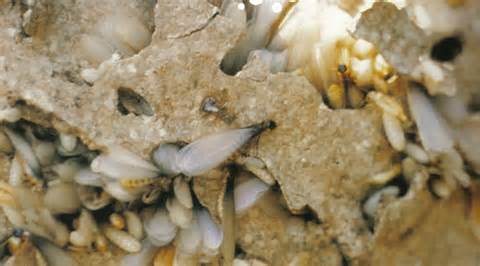00:00
00:00
00:00
Use Up/Down Arrow keys to increase or decrease volume. 1. Swarming Termite0:08
Swarming Termites
Why Termites Swarm
The purpose of swarming is for termites to reproduce and create new colonies near food sources. Like ants, termites are very social creatures that thrive in a colony. Young termites develop wings in the springtime in order to disperse from their parent colonies in swarms. These “swarmers,” or “alates” fly through mud tubes in the case of subterranean termites. Though they don’t fly for long, the swarms are usually carried along on a breeze until they reach the ground.
Once they touch back down, the insects can establish new colonies. Colonies usually swarm only once per year, though in some cases, multiple swarms may occur. When multiple swarms occur in a season, they are generally smaller swarms than the first occurrence. Our Universal Pest & Termite technicians can help with questions about swarming termites in Virginia Beach, Chesapeake, Norfolk, Portsmouth, Williamsburg, and surrounding areas. Call today (757) 699-5166.

Signs of a Termite Infestation:
– Damaged wood. While some termites leave visible signs of wood damage like blistering and holes, a lot of termite damage is hidden below the surface. Wood that’s infested with termites will be soft and easy to pierce, and it will sound hollow when tapped.
– Shelter tubes. Termites build shelter tubes – also called mud tubes – out of dirt, particles of wood, and their own saliva. These tubes allow termites to move around without being exposed to open air, where they would dehydrate and die. You’ll most likely find shelter tubes in your crawl space, attic, floor joists, and foundation walls.
– Flying swarmers. Flying swarmers are termites that reproduce and locate places for their colonies to settle. You’ll see these winged insects emerging from soil and wood, and you may also see their discarded wings on the floor or around windows and doors.

